Reheating a pizza is often one of the simplest and hardest things to do. There is often going to be a loss in taste, look and crunch after a few minutes in the microwave.
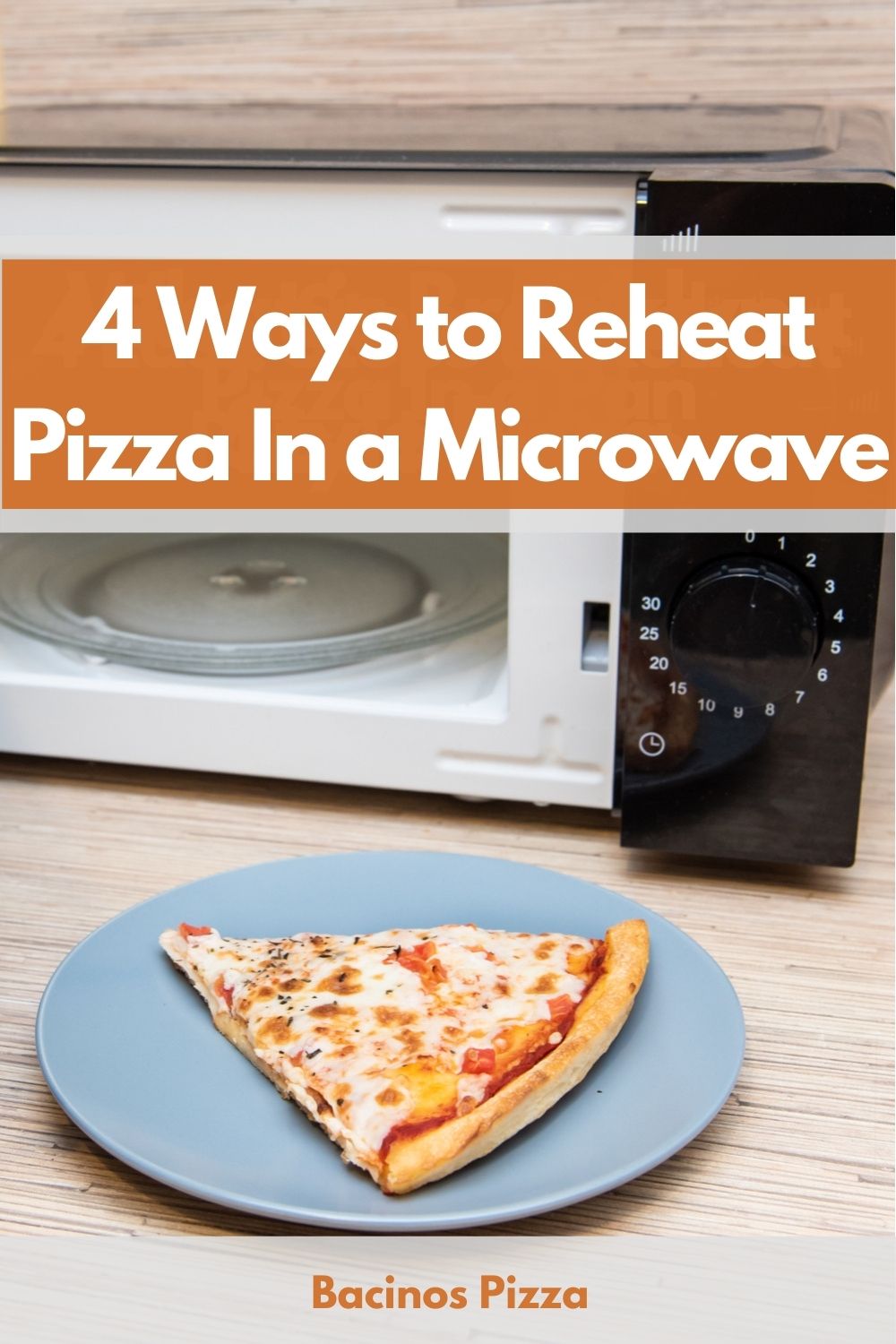
Moreover, the microwave is notorious for badly heated foods. Most of the time, the microwave heats its turntable more than the pizza on the plate, leading to a soggy and cold pizza, despite heating sounds going on inside.
But, this article explains how to perfectly heat a pizza to give you the desired maximum taste and crunch.
How does a microwave heat food?
Wikipedia explains that a microwave is a piece of electric equipment that heats water molecules by electromagnetic radiation.
It induces polar molecules in the food and produces heat energy through its dielectric constant.
It is often used in domestic cooking because the heat range is perfect for simple heating activities such as warming up meals and not for professional use that requires a high heat supply for grilling, frying, and baking purposes.
The polar molecules pick up water present in the pizza and produce heat energy to heat it, the consistent rotation is to ensure the radiation picks up every water molecule for even heating.
This is why your glass or plastic ware is not often hot due to the inability of active polar molecules in them.
Method 1. How to reheat pizza in a microwave with the water
When you about to heat the pizza in the microwave, place a glass cup of water alongside it.
So your microwave contains your plate of pizza about to be heated and a glass cup of water.
Heat in high temperature for about 30 seconds or more or until you are comfortable depending on the size of the pizza.
After heating, you will be presented with a very crispy pizza cooked to perfection.
Why do we add water to the microwaved pizza?
The essence of the glass of water is to absorb some of the microwave rays, making the pizza heat slower and more evenly due to the even distribution of heat and less rate of water vaporization.
Normally, without the glass of water present in the microwave, the pizza would absorb all the whole rays and will lead to faster water vaporization which often leads to uneven heating due to the difference in water concentration in the pizza slice and soggy taste.
The glass of water ensures a more distributed heat and a crisp taste. Make sure the water container is microwave friendly.
Method 2. How to reheat pizza with the microwave and a toaster
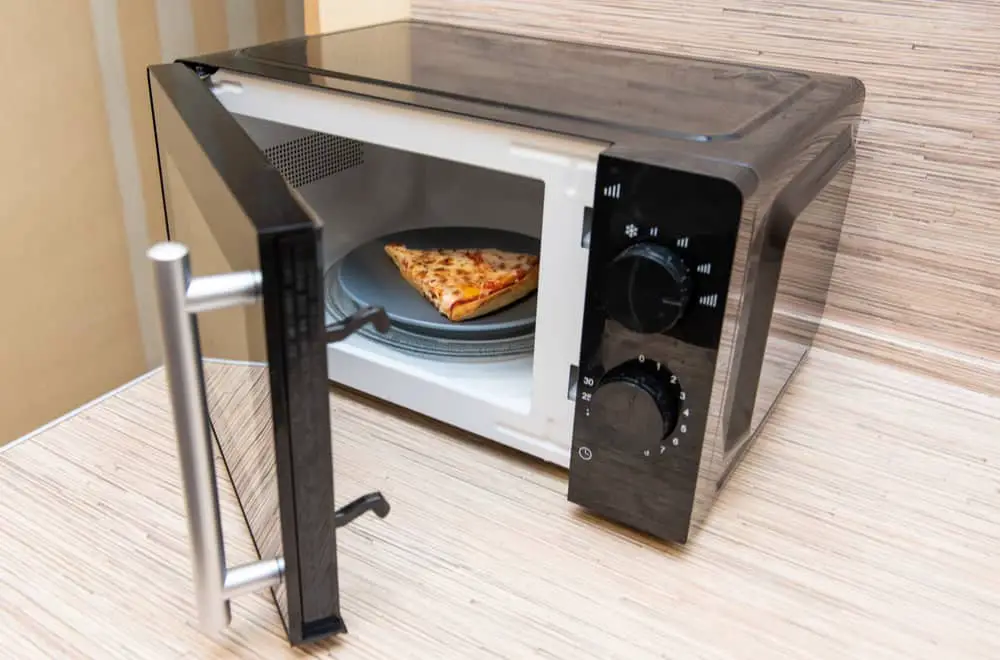
Start by microwaving the pizza a little bit, but not too hot. You can achieve this by setting your microwave to medium heat for 10-15 seconds.
The temperature should be lukewarm. Transfer the slight microwave-led pizza to the hot oven toaster for a little bit. This is to let the pizza crisp up a little bit.
Do not leave it too long in the oven or else you might end up with too hard and crunchy pizza. Add more cheese if you desire.
If this method is done correctly, you are sure to end up with a crunchy and dry pizza.
Method 3. How to reheat pizza with the microwave and a pan
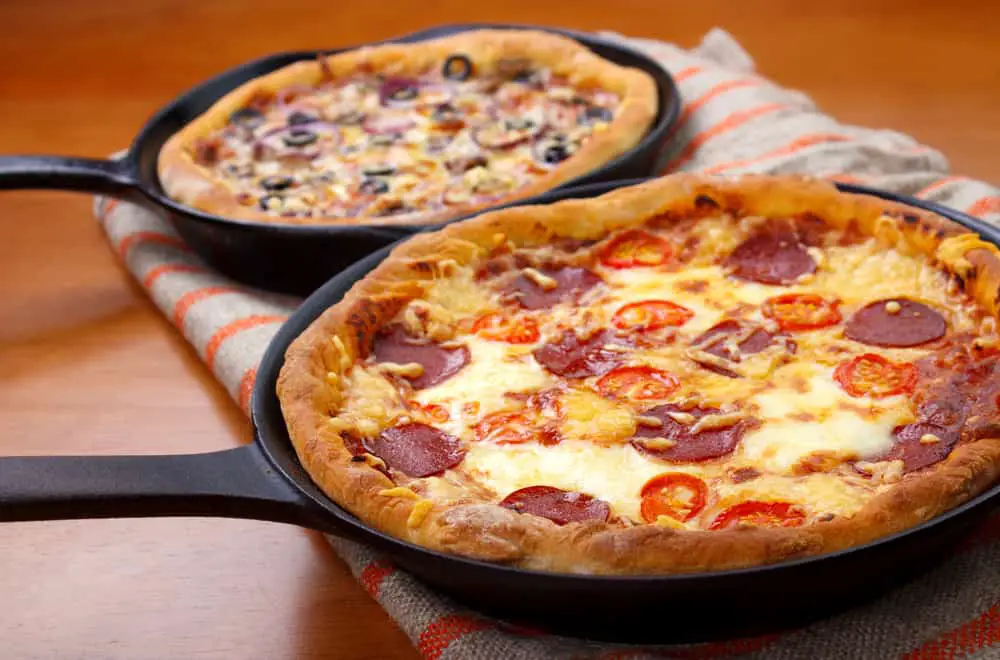
Microwave the pizza at first without using a glass of water, making sure the temperature is lukewarm as the toaster oven is.
Transfer the pizza to a pan. You can choose to add cooking oil if the pan is sticky or avoid it if it’s non-sticky.
Get a frying spoon to even the cooking, and flip to the toppings side to get it cooked.
This method provides you with fresh, hot, and crispy pizza.
Method 4. How to reheat pizza with the microwave and oven
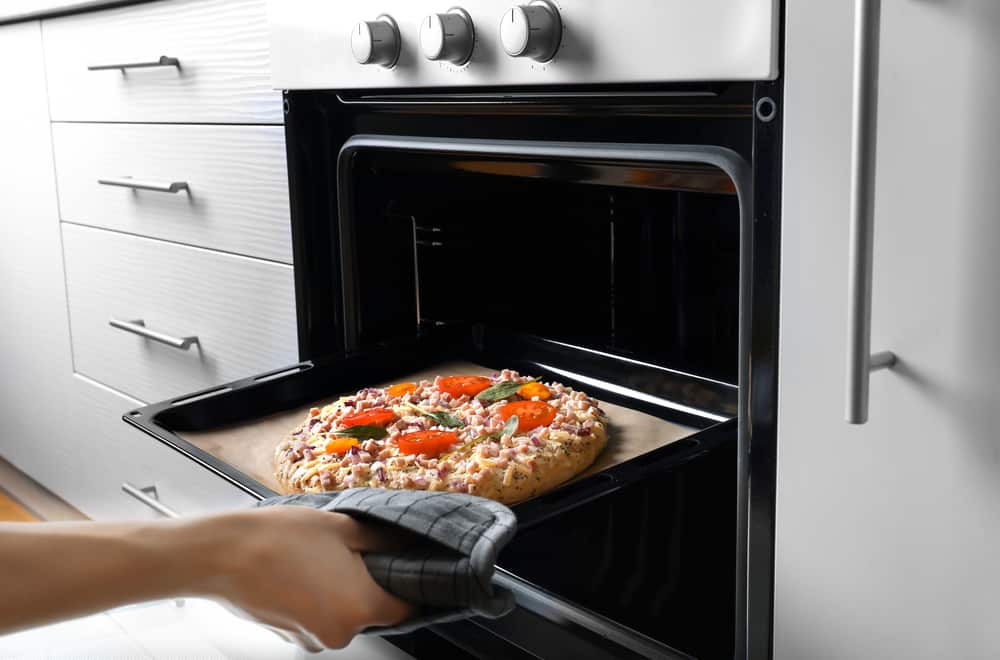
This is almost the same method as the toaster but slightly different.
After heating the pizza in the microwave to lukewarm temperature, transfer it to the oven.
Turn the settings to the highest and leave it for 10-15 seconds or more, depending on how large the pizza is.
How to reheat frozen pizza?
When reheating frozen pizza, do not let it thaw. Letting it thaw before heating will produce a gross-looking inedible mess.
This is the reason why most frozen pizza package instructions do not thaw.
Instead of letting it thaw, why not preheat the oven at first then take the pizza out of the box and put it into the oven to bake? [Can You Put a Pizza Box in the Oven?]
Make sure you remove the plastic wrappings or attached cardboard before heating.
This YouTube video shows a practical way of reheating a frozen pizza perfectly.
Is it safe to eat microwaved foods?
According to WebMD, using the microwave is considered safe for you and your foods provided you avoid some things which include;
- Plastic: According to Healthline, it is advised to avoid microwaving with plastic plates, this is because most plastics contain hormone-disrupting compounds like BisPhenol-A (BPA) which is known to cause several severe health conditions like cancer and obesity. When the plastics containing these compounds are heated, they seep into your food and over time can cause these mentioned diseases. ou can use plastics with the tag “microwave friendly” on them as they do not contain BPA.
- Give distance: Microwaves are known to emit rays, which in turn generate heat to warm your pizza. These microarrays are dangerous to humans, hence the reason for metal screens and shields to cover any leaking rays. Avoid pressing your face near the coverage and ensure you give at least a 50cm distance between you and the equipment. If your microwave has a faulty door that does not close properly, stop using it and get it repaired or replaced immediately.
There are several demerits and merits of using the microwave and some of the merits include;
- Preserves the food nutrition: Unlike other cooking methods that involve the use of low heat to warm up the food. This low heat ensures the preservation of nutrients that would have been killed if high heat was applied. This does not necessarily apply to all foods as microwave was seen to destroy some cancer-killing substances in garlic and also destroyed 97 percent of antioxidants in broccoli.
- Destroys the formation of harmful substances: Microwave has been seen to destroy some harmful substances produced during heating such as nitrites in bacon. One of the demerits is it does not heat food properly. Microwaving does not produce enough heat to properly warm up a meal, as most of the time, most users have complained about the heating of the glassware rather than the food. It is also known for heating different spots on the food rather than the whole meal.
Does cooking or reheating food destroy its nutritional value?
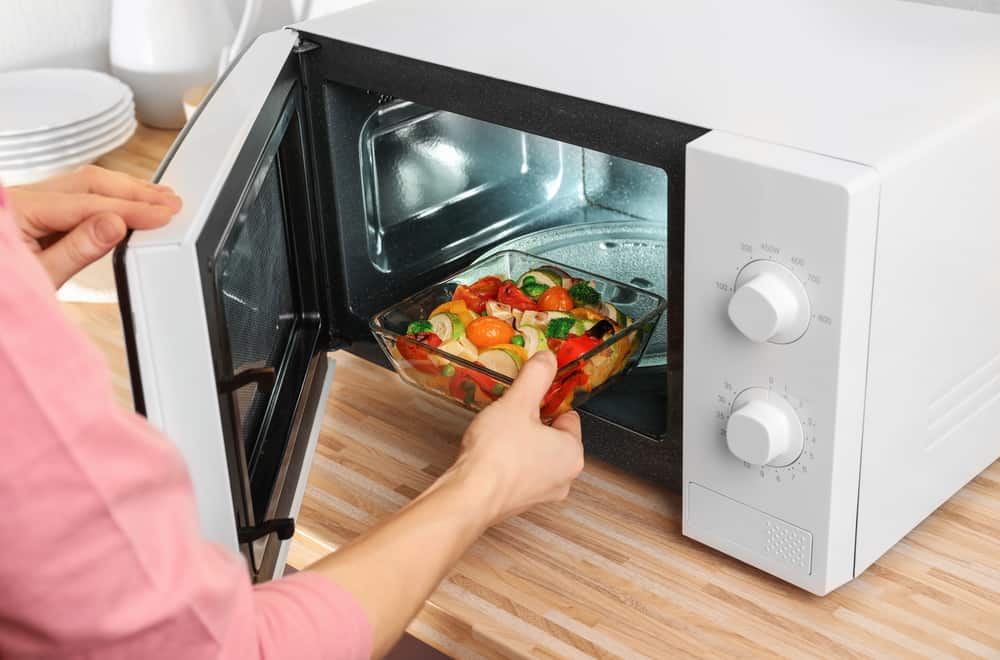
An article from WebMD proves that reheating food sometimes destroys some of the nutritional value if high heat is involved, but the use of microwaves may not kill these nutritional values.
Some nutrients cannot stand a double strong heat but the small heat the microwave radiation produces makes it the best equipment for reheating food.
Will reheating my pizza change the taste?
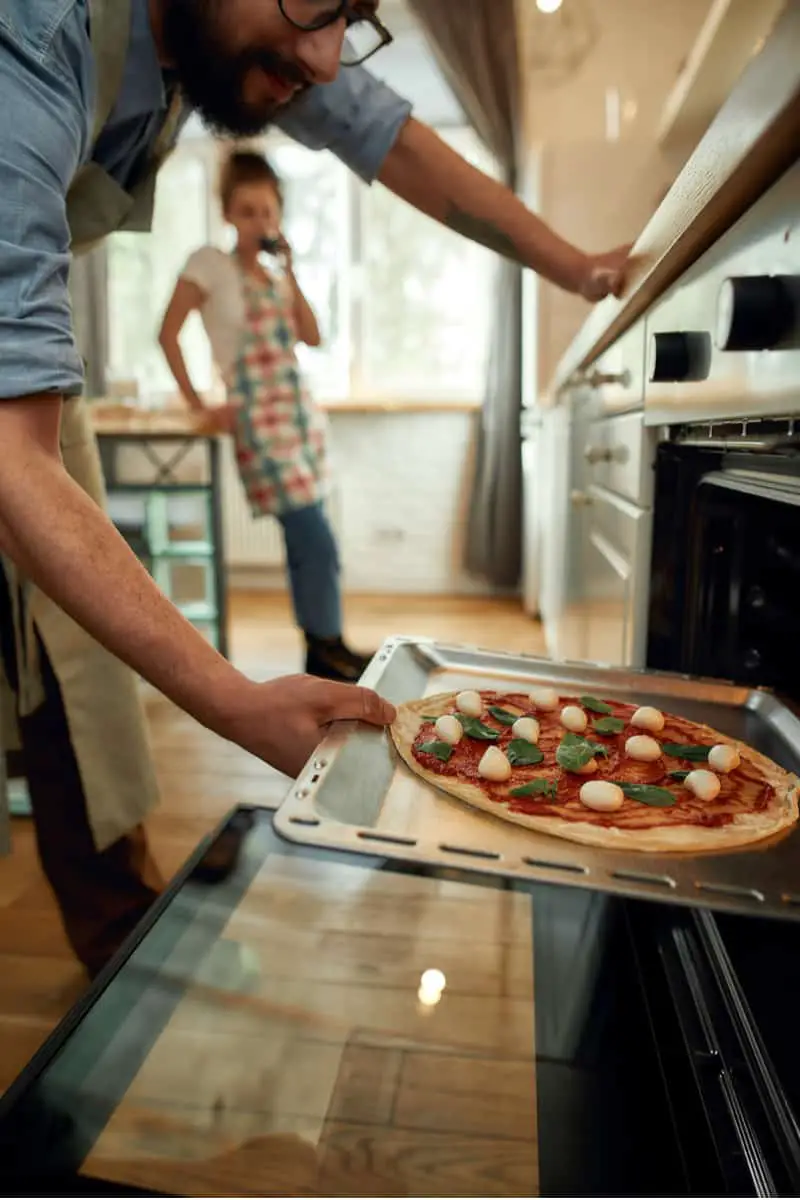
There is sure going to be a difference between fresh and reheated foods. Cold or leftover pizzas become soggy afterward because the moisture from the sauce and the juice of the fats will move from the toppings to the crust layer.
This will create a soggy layer between the crust and the toppings. So to avoid the taste of the sogginess it is advised to heat the pizza slowly in low heat as stated above to get rid of it.
Heating it slowly with a paper towel beneath the pizza will make sure the sogginess will get absorbed, thereafter you can transfer it to your pan or toaster for additional greasing and oiling.
There is going to be a slight difference (but not too noticeable) between the fresh and your leftover pizzas.
Can reheating my pizza cause food poisoning?
Yes and no.
Yes, it can cause food poisoning if it is preserved before the safe food temperature. The danger zone temperature of food is from 40°F to 130°F.
If your pizza was left out at room temperature for more than six hours and then frozen. It is most likely that bacteria were frozen alongside the pizza.
Defrosting the pizza to heat under low heat might make the bacteria active again and can lead to food poisoning. But if it is frozen properly, then there is no chance of food poisoning.
Benefits of Reheating Pizza
There are several benefits of reheating your pizza, if it’s done properly. It can save you more money, less food wastage plus it is environmentally friendly.
But if the reheating process is not performed properly, you may be at risk of ruining your whole day with a partially-baked pizza or chugging down infectious cold food.
Bottom Line
Reheating your food properly with either a microwave or with a combination of different heating equipment is advised as it saves you more money and time spent on cooking new foods.
Ensure you follow all the steps provided to have a perfectly reheated meal with no sogginess. It’s normal to have an excess in the food supply, but it’s unethical and environmentally- unwise to waste food.
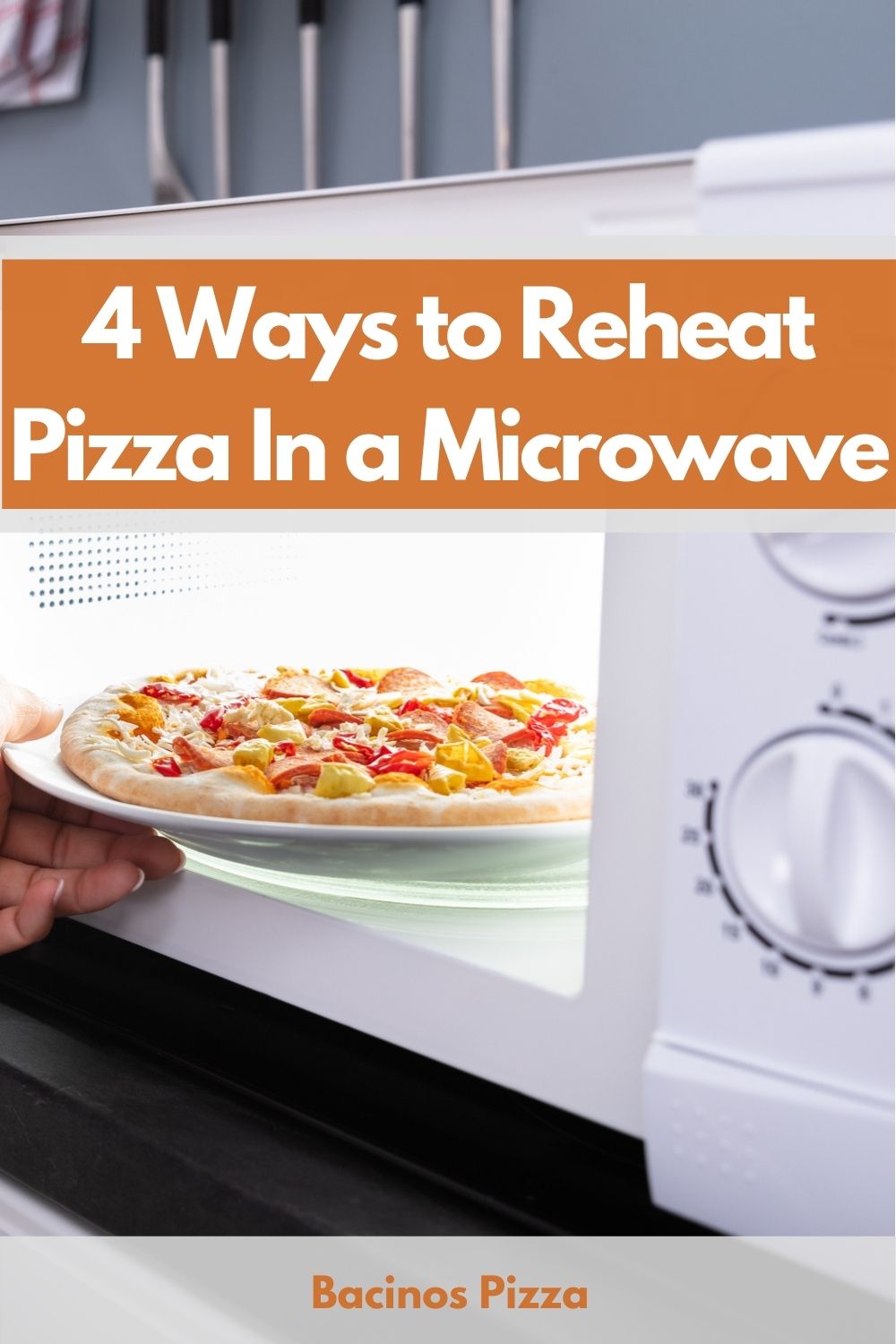

Barbara is an enthusiastic food-exploring person that goes through different culinary experiences. She got inspired by creating a pizza blog post after she tasted one of the best-selling pizzas in Toledo.